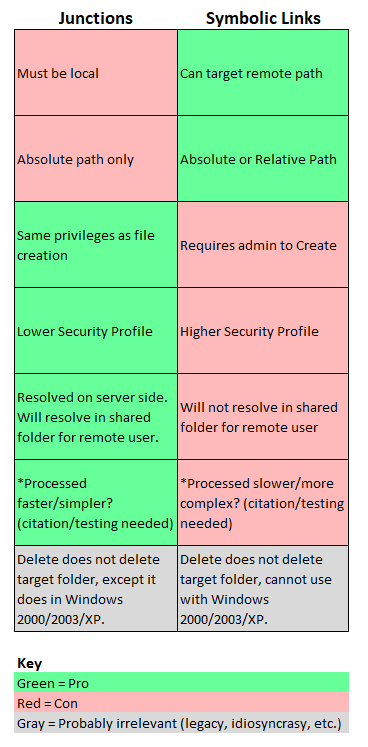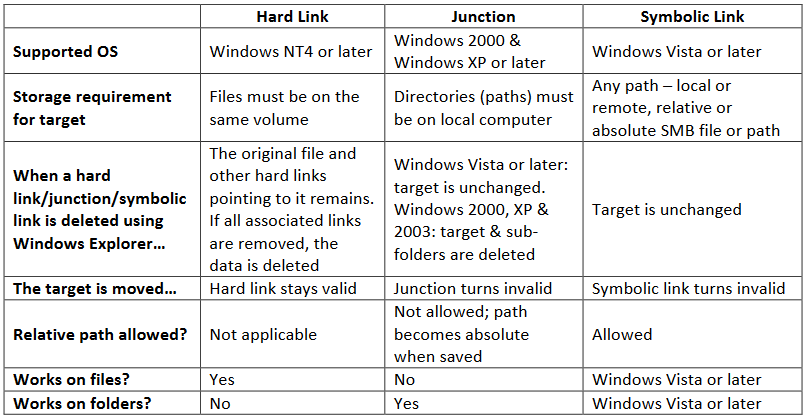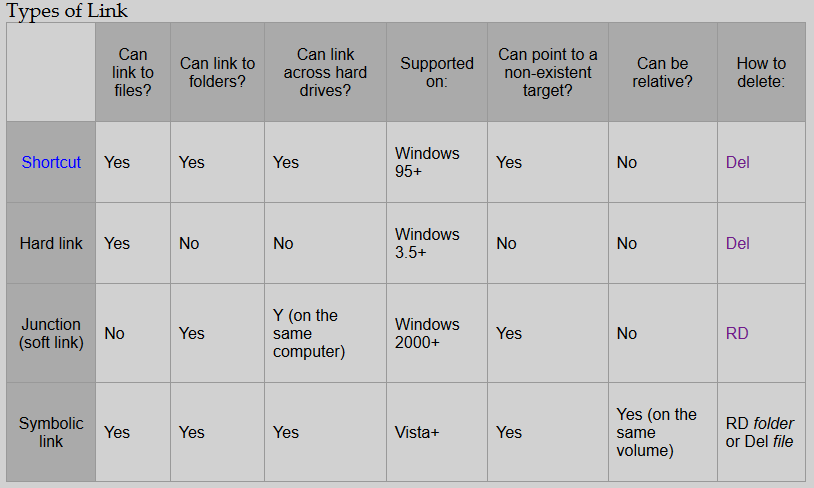Symbolic links have more functionality, while junctions almost seem to be a legacy feature because of their limitations, but the security implications of these limitations are specifically why a junction might be preferred over a symbolic link. Remote targeting makes symbolic links more functional, but also raises their security profile, while junctions are safer because they are constrained to local paths. So, if you want a local link and can live with an absolute path, you're probably better off with a junction; otherwise, consider a symbolic link for its added abilities.
![enter image description here]()
*The statement of difference in speed/complexity comes from an unverified statement in the Wikipedia entry on NTFS reparse points (a good read).
**Ever since the Windows 10 Creators Update, one can enable Developer Mode to remove the admin restriction for NTFS symbolic links.
Other NTFS Link Comparisons
Here are some other comparisons on the topic, but these can be misleading when considering junctions because they don't list the benefits I list above.
Taken from here (a good introductory read)
![enter image description here]()
From SS64 page on MKLink
![enter image description here]()
Comments about Terminology
Junctions are Reparse Points (may be described as symbolic links)
NTFS Junctions and NTFS Symbolic links are really doing the same thing in the same way (reparse points), aside from the aforementioned differences in how they're processed. In fact, technically, a Junction is a "symbolic link" in the more general sense of the word, and sometimes documentation might call a Junction a symbolic link, as is the case here. In such cases, "symbolic link" does not mean NTFS Symbolic Link which is different than a junction (see below).
NTFS
Even though the OP specifies this, it's worth pointing out that "symbolic link" is a very general term that is not specific to NTFS. So, to be specific, this comparison is about NTFS Junctions vs. NTFS Symbolic Links.



